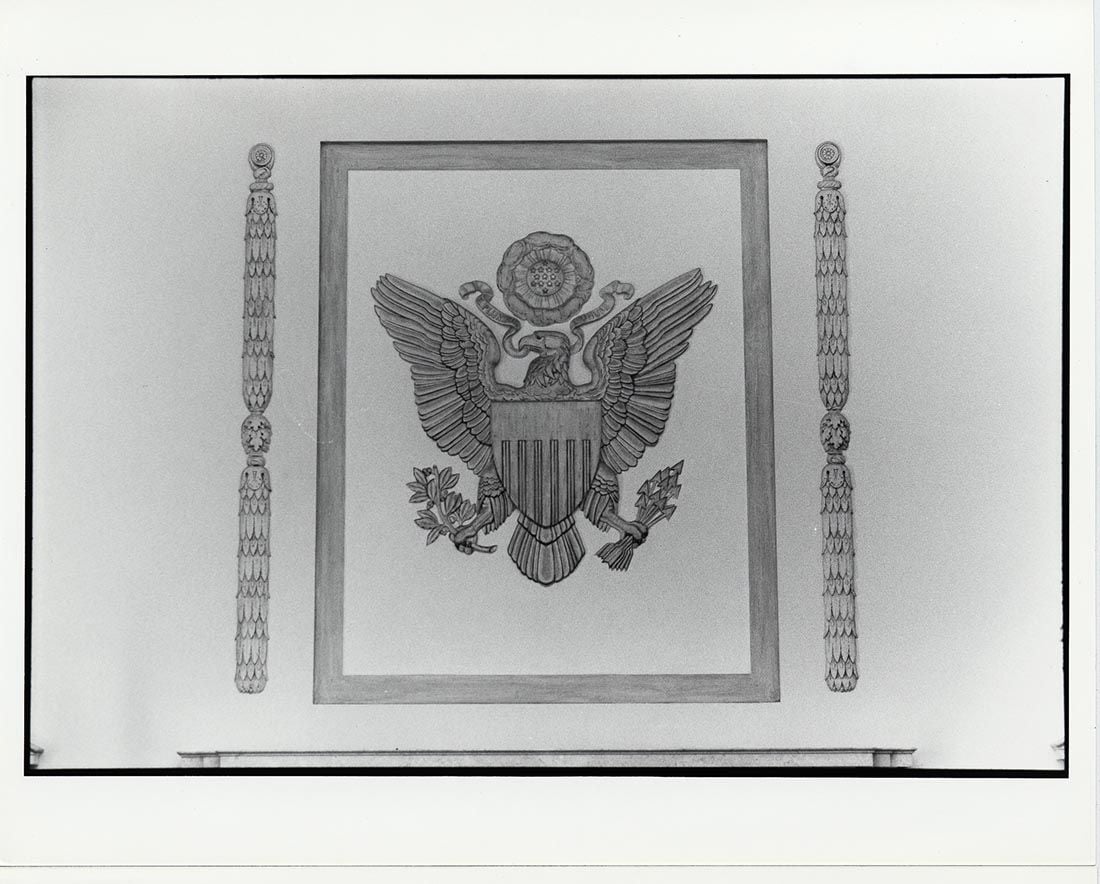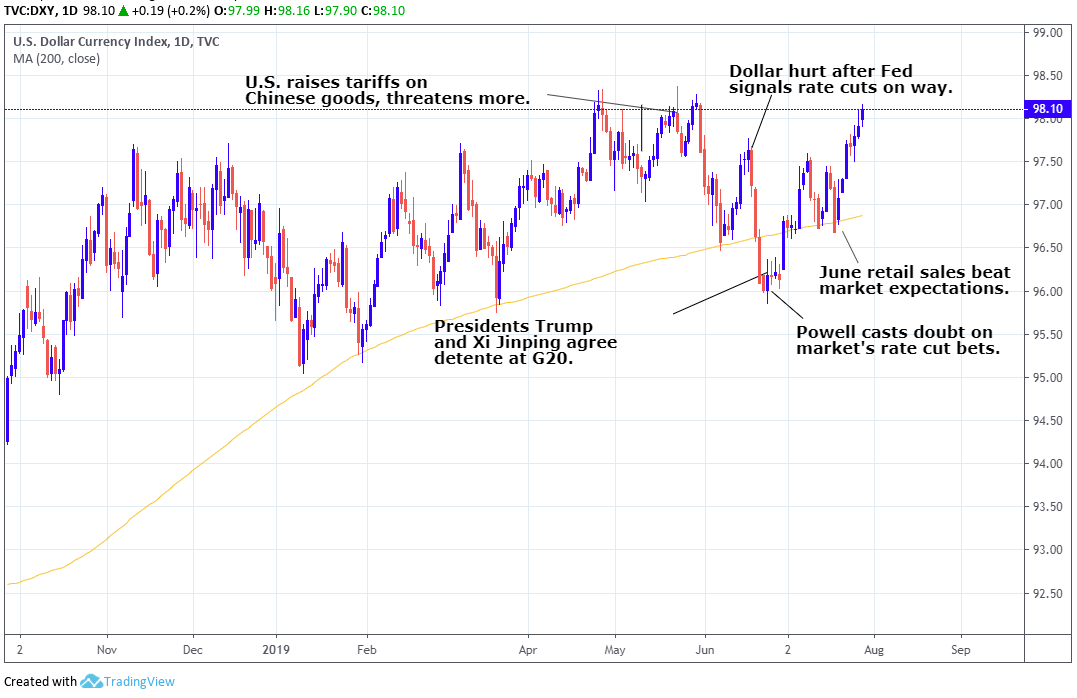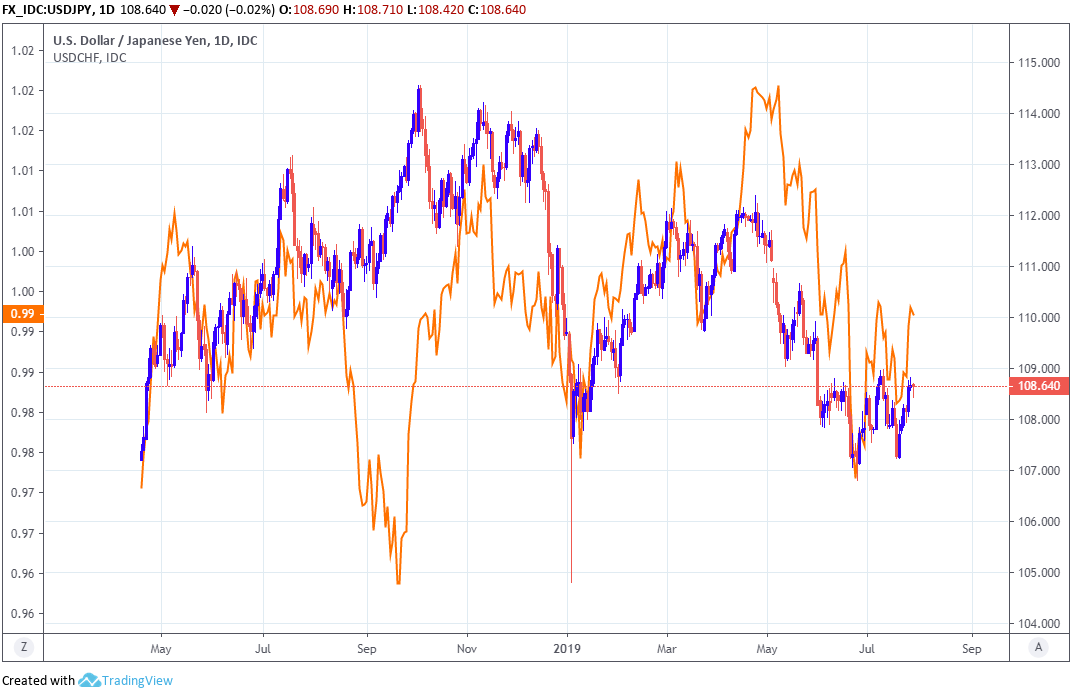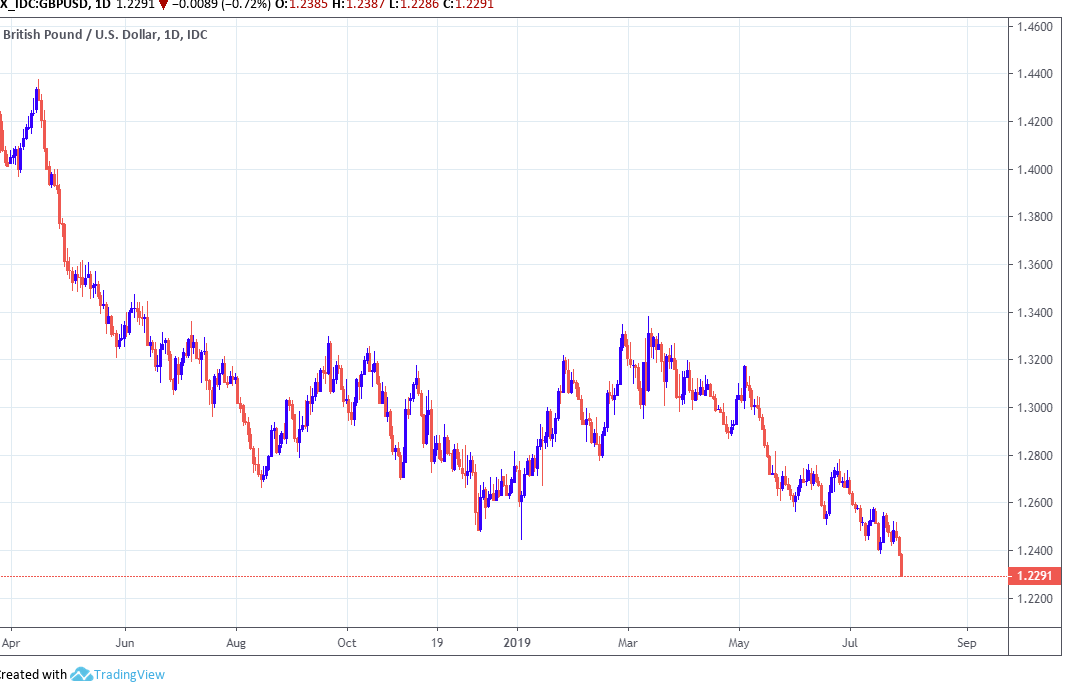The U.S. Dollar: Beware of Strength this Week as Fed Begins to Cut
- Written by: James Skinner

U.S. Government Works
- USD stregnth following Fed cuts likely says J.P. Morgan.
- Amid downbeat outlook for interest rates in rest of world.
- Says sell GBPUSD: Dollar strength and Brexit will weigh.
The Dollar rose broadly Monday and could be poised to continue outperforming its developed world rivals this week even if the Federal Reserve ( Fed) cuts its interest rate on Wednesday, according to analysts at J.P. Morgan, who say a weak global economy means investors will continue to favour the U.S. currency.
America's Dollar advanced against all of its G10 rivals Monday other than the Japanese Yen and Swiss Franc, which is exactly the pattern J.P. Morgan has warned could play out for the remainder of the week even if the Fed calls time Wednesday on the rate hiking cycle that buoyed the U.S. currency last year.
Interest rate cycles are the single most important driver of exchange rates because of the impact that changes in rates have on the returns offered to international investors by domestic bond markets, as well as the capital flows that drive markets. Higher rates normally boost the attractiveness of one currency over another, while the threat of lower rates tends to divert speculative capital away from the currencies in question.
However, in the case of the Dollar, some analysts are looking for a different reaction this time around. Not least of all because of the dire state of the global economy, which is threatening to send interest rates in other developed markets even lower than they are now once the Federal Reserve takes the plunge and begins to cut. That means, as far as J.P. Morgan and a few others are concerned, alternative currencies won't necessarily be left looking any more attractive to investors once all is said and done.
"The dollar index is at a five week high as the Fed prepares to embark on its easing cycle. We reiterate that rate cuts per se are not guaranteed to sink the dollar, it will all depend on the macro context. Negative growth momentum, especially in Europe, is not conducive to a major downtrend in an anticyclical currency such as USD. We refrain from any large scale USD shorts in our portfolio," says Paul Meggyesi, head of FX strategy at J.P. Morgan.

Above: U.S. Dollar Index shown at daily intervals.
The Federal Reserve is widely expected to cut its interest rate to 2.25% on Wednesday, although some in the market are still warning that a 50 basis point cut to 2% is a credible prospect too. Insurance against a future economic downturn is the aim of the Fed's anticipated game, because it already lifted U.S. borrowing costs four times back in 2018 and the analysts community now fears the trade war with China will soon begin to hurt the U.S. economy.
President Donald Trump's tariff fight with China has damaged business confidence and depressed investment the world over, which has slowed economic growth outside of the U.S. Fears are that, in a globalised world, this will soon put the breaks on the U.S. economic expansion. Some had suggested the economy already hit the ropes in the second-quarter but data released last week showed the slowdown was more mild than the market anticipated.
"The failure of USD to depreciate on the cusp of a landmark shift in Fed policy may be contrary to the market consensus but it is neither unusual in a historical perspective nor unwarranted from a fundamental perspective," Meggyesi says, in a note to clients. "The bottom line for us is that global growth is still too weak and other central banks increasingly too dovish to sustain a materially lower dollar on a broad basis."
Meggyesi forecasts Dollar weakness will mostly be confined to the USD/JPY and USD/CHF exchange rates, although he warns the greenback could also temporarily cede ground to some emerging market currencies, particularly those that are not trading beneath their own clouds of political uncertainty.
J.P. Morgan also says the Dollar is "cheap" on a fundamental basis, citing models that suggest the greenback is undervalued by around 1% based upon differences in interest rates and macroeconomic momentum. The models look only at the Dollar in the short-term, but many long-term models point to the Dollar being overvalued. Even the International Monetary Fund (IMF) last week described the currency as being between 6% and 12% overvalued.

Above: USD/JPY rate at daily intervals, alongside USD/CHF rate (orange line, left axis).
"We would assume that the 2.1% growth rate in 2Q should ensure that the initial move is a measured [25 bp cut] rather than a panicky 50bp [cut], and so don’t envisage any real downgrade to either the dollar’s high frequency fair value or its actual market value," Meggyesi writes.
Growth slowed from an annualised 3.1% to 2.1% between the end of the first and second quarters as changes in inventory investment among U.S. companies, as well as a fall in exports to the rest of the world, undermined the economy. However, output elsewhere is expected to have fallen more sharply, particularly in the Eurozone.
Eurozone figures for the second quarter will be released on Wednesday and the market consensus is for the annual growth rate to have fallen from a level that was comfortably above 1% to one that is notably below it. Markets are looking for the quarterly pace of GDP growth to have fallen from 0.4% to 0.2%.
The slowdown, which has its roots in the German industrial sector, could get worse this summer. The German industrial sector was already hurt by the U.S.-China trade war but it's now threatened by lower water levels on the Rhine and uncertainty over Brexit. Lower water levels on the Rhine can restrict the supply of materials to factories.
Previously, Fed cuts were supposed to give way to a recovery of the Euro as financial markets then looked to the European Central Bank (ECB) to begin lifting its own interest rate, but a slowing economy means hopes of an ECB hike have long since been dashed. The ECB is now expected to cut Eurozone rates in September.

Above: Pound-to-Dollar rate shown at daily intervals.
"GBP paused to hear what the new PM had to say. The message for the EU was uncompromising and heralds a conformational summer," Meggyesi says. "The only change we make to our portfolio this week is a tweak to our GBP trades modestly by taking profits on shorts vs. CHF and rotating them vs. USD."
With the Dollar expected to remain buoyant over the coming months, J.P. Morgan has told clients to sell the Pound-to-Dollar rate following the inauguration of Boris Johnson as UK Prime Minister last week.
Meggyesi says Johnson's stance on Brexit is likely to damage the Pound in the months ahead. Johnson claims he'll take the UK out of the EU on October 31 regardless of whether the EU agrees to remove the so-called Northern Irish backstop from Theresa May's agreement and renegotiate the broader text, which the EU says it won't do.
However, the Conservative majority is slim and likely to be whittled down to just one on August 01 when the Brecon and Radnorshire byelection takes place on August 01, assuming polls for the ballot are right.
This means the Autumn destination for Sterling is rapidly becoming a contest between a general election and a 'no deal' Brexit. J.P. Morgan forecasts the Pound-to-Dollar rate will finish the year at 1.24, which is little more than one cent above the 1.2291 level seen on Monday, although many have forecast it could drop to 1.15 or below if a 'no deal' Brexit becomes a reality.
Time to move your money? Get 3-5% more currency than your bank would offer by using the services of foreign exchange specialists at RationalFX. A specialist broker can deliver you an exchange rate closer to the real market rate, thereby saving you substantial quantities of currency. Find out more here.
* Advertisement




